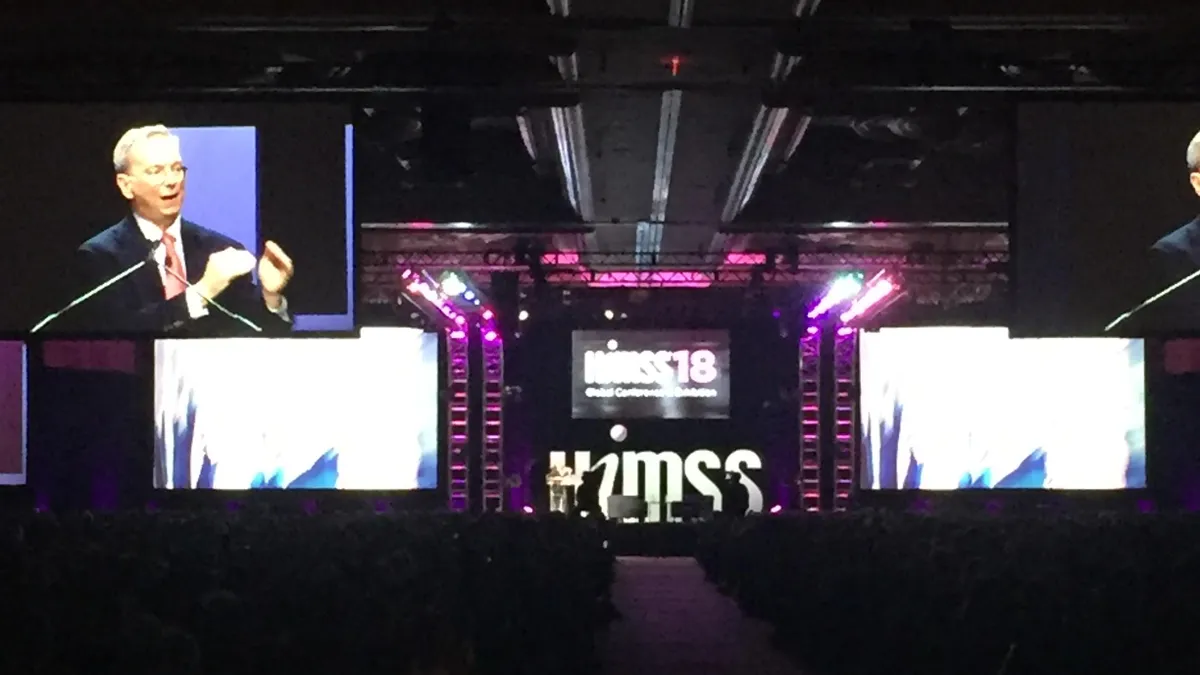LAS VEGAS — There's something missing in the healthcare industry, former Google executive chairman Eric Schmidt told tens of thousands of health IT professionals gathered at HIMSS18 on Monday.
A killer app.
However, the transition to a better digitally connected health future isn't just one killer app, but a system of them working together, Schmidt said. It will be a workflow-based app feeding into a voice-based app to help physicians do what they went to medical school to do — practice medicine.
For this to occur, the health IT landscape will need multiple tools, including a common health data store, longitudinal trend analysis capabilities, the ability to predict next clinical steps and speech-to-text recognition.
"It's closer than you think," Schmidt said.
He called for a “second tier” of data on top of EHRs, what he called a “clinical data warehouse,” that can act as an unstructured database of all existing datasets. “This is the key architectural point,” he said
Classification of data is easy. “The really powerful stuff is prediction,” Schmidt said
He touted Monday’s announcement of Google Cloud Healthcare API, which allows the user to take the data out of existing data stores like EHRs and put them in a normalized way into these new databases.
The API addresses the interoperability challenges and helps manage key healthcare data types — including HL7, FHIR, and DICOM — so data can be used for analytics and machine learning in the cloud.
There are many reasons healthcare is increasingly moving to the cloud, Dr. Joe Corkery, product lead of health & life sciences at Google Cloud, told Healthcare Dive earlier in the day.
"It's no longer the question of 'Do I go to cloud?,' it's "How do I go to cloud?' These platform capabilities are helping them get to the cloud," he said.
With consumers becoming more demanding, from a data perspective, the transition to the cloud is imperative, Schmidt said. "Healthcare is becoming an information science," he said.
Doctors within Alphabet, Google's parent company, believe the algorithms they are working on for predictive analytics can estimate outcomes in the ER 18 to 20 hours earlier than any other system using “deep analysis” of data. “We’ll see if that is true, but I think they are right,” he said.
Schmidt also conjured up a Siri-like character named Liz, who he said would be able to use new algorithms to predict outcomes. “When Liz is whispering in the doctor's ear, she not only has access to the best practices … but, more importantly, she can use new prediction algorithms to generate new life-altering recommendations,” he said.
She'll do this via a technology called reinforcement learning, a type of machine learning.
Though the work is hard and humbling, Schmidt said the health IT community can work together to scale innovation and save lives. He predicted if he is invited back to HIMSS in 10 years, he will bring with him a Liz-like character.














